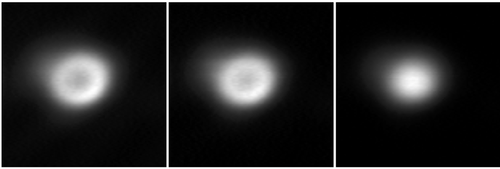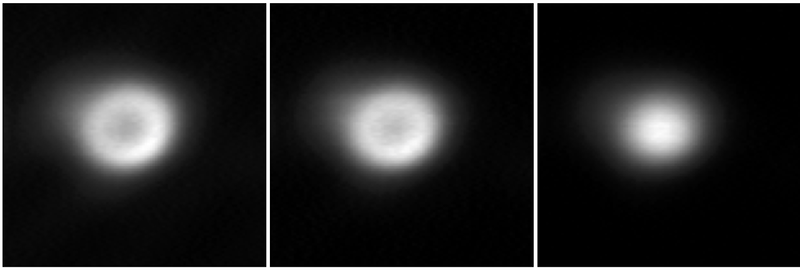Negative Resistance with a Single Atom
Negative differential resistance (NDR) refers to current decreasing as voltage increases, contrary to a normal resistor. The phenomenon is useful in electronics, and now a research team has demonstrated a reliable form of single-atom NDR and has explained in detail how it works. To verify their model, the team used a scanning tunneling microscope in a new way—they measured the time it takes for electrons to hop onto a single atom and showed that this time is critical for the NDR effect. The work opens the door to integration of NDR into microelectronic devices.
NDR was first observed in the tunnel diode 50 years ago [1]. Tunnel diodes are used in switching devices, oscillators, and other applications. However, it has proven difficult to incorporate them into integrated circuits, limiting their wider use in microelectronics. Researchers have found cases of nanoscale NDR, but they have been either unreliable or hard to control.
Robert Wolkow of the University of Alberta in Edmonton, Canada, and his colleagues created a robust, single-atom NDR device by baking a silicon wafer to remove surface-attached oxygen and then immersing it briefly in atomic hydrogen at very low pressure. Hydrogen atoms bonded to almost every surface silicon atom, leaving only a few atoms exposed. These atoms provided so-called dangling bonds, each of which hosted two electrons, one with higher energy than the other.
The team placed the needle-like tungsten tip of a scanning tunneling microscope (STM) a few nanometers above a dangling bond and recorded the current of electrons that flowed from wafer to tip as they varied the voltage across the gap. They found that current mostly increased with increasing voltage, except over the range of about 1.2 to 1.4 V, where they observed NDR for the dangling bond.
The researchers used a computer model to develop an explanation for their data. Electrons flow from the silicon atom to the STM tip only when the Fermi energy of the tip—the energy of conducting electrons—is at or below the energy of one of the two electrons in the atom’s dangling bond. The Fermi energy starts out high at zero voltage and drops as the voltage across the gap is raised. When the Fermi energy descends to the energy of the upper of the two electrons, that electron can then jump to the tip. The vacant state is almost instantly refilled with a new electron from the “sea” of silicon electrons (the conduction band). Current flow is dictated by the rate at which electrons jump from the upper state to the tip.
As the voltage rises further, the Fermi level becomes low enough that an electron occasionally jumps from the lower dangling bond state. This energy state refills much more slowly because its energy is far below that of the conduction band, and the upper state cannot refill until the lower one does. The computer model showed that this “refill delay” leads to NDR, because the flow of electrons is held back further as the voltage increases. At still higher voltages, the energies shift, and the lower level can rapidly grab an electron from the silicon lattice each time it loses an electron to the tip. Current can then resume flowing mainly from the conduction band to the tip via the upper level, producing normal current vs voltage.
Wolkow and his colleagues verified this picture by measuring current vs voltage in a new way, by applying brief voltage pulses to the STM tip. When the pulses lasted 10 microseconds or longer, they saw NDR. But when they reduced the pulse length to 10 nanoseconds, the effect disappeared. Those pulses must have been so short that there wasn't enough time for a lower level electron to jump to the tip, the researchers say. Combining this information with other data, the team determined the timescale for electrons refilling the empty lower level.
“A dangling bond is the ultimate device,” says Bruno Grandidier of the University of Lille, France, who specializes in nanoscale physics, and the new work “beautifully illustrates” the timescale of electron dynamics in this system. He adds that the results also suggest that one might integrate dangling bonds into micro- and nanoelectronics using single, exposed atoms on a surface. Team member Mohammad Rashidi explains that although the dangling bonds in this work were randomly generated, they can also be created by using an STM to pluck individual atoms off of a fully coated silicon surface.
–David Lindley
David Lindley is a freelance science writer in Alexandria, Virginia.
References
- L. Esaki, “New Phenomenon in Narrow Germanium p−n Junctions,” Phys. Rev. 109, 603 (1958).





